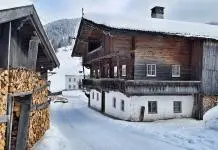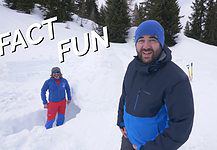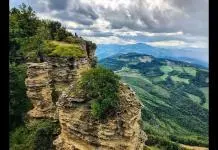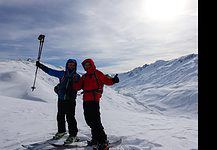Travel to Iceland
Even though it is small, Iceland is packed with impressive natural wonders. From the country’s abundant volcanoes and dramatic glaciers to the chance to view the awe-inspiring Northern Lights – Iceland sightseeing has some pretty great scenes. There are plenty of reasons to visit Iceland.
Volcanic tourism in Iceland includes trips to scaldingly hot bubbling mud pools, noisy steam vents and a Geysir that blows every four to eight minutes. There’s also a bunch of thermal springs everywhere, including ones that heat the iconic Blue Lagoon.
Then there’s the ice. Glacier tours are a popular attraction where you can travel by snowmobile, on foot or on the back of an Icelandic pony. And not to forget the opportunity to see the Northern Lights in Iceland.
The capital city, Reykjavík, is small but packed with things to do with a lively atmosphere. The other smaller towns, fishing villages, farms and hamlets are scattered along the coastal regions, while the entire interior of the country remains uninhibited.
It’s important to note that Iceland holidays are not cheap – make sure that you have a sufficient budget. The best time to visit Iceland is during the summer months of July and August when it’s a bit warmer. If you want to see the Northern Lights though, then February, March, September and October are best.
Traveling with kids? Read all about the best experience of Iceland for kids.
Visa Requirements for Iceland
Iceland is part of the Schengen agreement, which allows most of the EU citizens to enter the country with only their ID. Visitors from certain countries like the USA, Canada and New Zealand can visit visa-free for up to 90 days in Iceland. A stay of longer than 90 days for non-EEA or non-Swiss citizens usually requires a visa, which you need to get before your trip.
Other nationals, like those from Russia, Asian countries and South Africa, will need to apply for a Schengen Visa before arriving in Iceland.
For more information on the Iceland Schengen visa, visit this website.
Important Cultural Information
The Icelanders pay special attention to their appearance and are an extremely civilized nation.
They are also an industrious nation who have worked hard to recover from financial upheavals and transform their country into a popular tourist destination. Speaking of financial crisis’, this is an emotional topic for Icelanders to discuss.
From a first impression, Icelanders may seem gruff and unapproachable – this is fact untrue. They are an extremely welcoming, warm and friendly nation.
When entering someone’s home, it is customary to take off your shoes. Punctuality is also not as important as in other nations, locals will often arrive much later than requested for parties and social gatherings.
Littering is completely unacceptable, as well as driving off of tarred roads. Nature is highly respected in Iceland. Tipping in Iceland is not expected, gratuities are usually included in the bill.
The official language is Icelandic, though Danish and English are widely spoken.
Banking & Money in Iceland
The currency in Iceland is the Icelandic króna (ISK). Coins are available in 1, 5, 10, 50 and 100 krona. Bank notes are available in 500, 1000, 2000, 5000, 10,000 krona.
The main banks in Iceland include Glitnir Banki hf, Kaupthing Bank, Landsbankinn, MP Investment Bank, Nýi Glitnir, Sparisjóðabanki Íslands hf, SPRON and Straumur-Burdaras Investment Bank.
Many places (including tourist attractions, restaurants and bars) will take Euros, US dollars, Canadian dollars, and Swedish, Norwegian and Danish currencies. Most locals pay everything by credit or debit card, which is widely accepted across the country (including taxis, gas stations, souvenir stands, and even remote guest houses). Payments with cards use the chip-and-pin method – if yours is not activated, you can still use your card to purchase.
If you do want to carry cash, there are plenty of ATMs (note though that not all ATMs are accessible 24 hours). Upon arrival at Keflavík International Airport, you’ll easily find ATMs and the currency exchange desk.
Medical Emergency Information
112 is the single emergency number in Iceland, representing all the response parties to accidents, fire, crime, search, rescue and natural disasters on land, at sea, or in the air. Additionally, Iceland‘s child protection officers can be reached through 112.
112 can be reached anywhere in Iceland – either by phone or SMS, at no cost.
If you’re looking for travel insurance, we are an affiliate of World Nomads.
Wi-Fi and Internet in Iceland
There are three main network operators in Iceland: Siminn, Vodafone and Nova.
All three suppliers are reliable. Síminn is Iceland’s market leader, while both Vodafone and Nova offer competitive packages.
You will find several shops selling SIM cards around Iceland, including stores, supermarkets, kiosks, drug stores, official outlets and at the airport. The process is relatively quick and easy in Iceland, you don’t even need to show your ID.
Another option is to rent a mobile MiFi device, your own hotspot. You can order these online or pick them up at the airport.
Wi-Fi is easily available at restaurants, cafes, hotels and some public spaces. Major petrol stations, such as the N1 stops found across Iceland, also offer Wi-Fi connection. Make sure to set-up a VPN (like ExpressVPN) before using public Wi-Fi spots.
There aren’t as many coworking spaces in Iceland compared to the rest of Europe, with just a few located in Reykjavik.
Getting to Iceland
All international travel will arrive in Keflavik international airport, which is about 40km west of Reykjavík.
This airport is connected by a large number of flights from Europe, the UK, Scandinavia, the US and Canada. The main airlines flying to Keflavik international airport include Icelandair (with direct flights from the UK, Europe, and the US) and WOW air (a low-cost Icelandic airline flying from the UK, Europe, the US and Canada). Other international airlines, with limited flights to Iceland, include Air Canada Rouge, Delta Airlines, EasyJet, Germanwings, SAS, Niki, Austrian Airlines and Atlantic Airways.
There is also Reykjavik airport in downtown Reykjavik, but this airport only has domestic flights and international flights to Greenland and the Faroe Islands.
Search for flights to Iceland on Expedia.
You can also reach Iceland by sea, via the Faroese superferry Norröna. It has year-round crosses of the North Atlantic. Smyril Line operate a weekly service from Hirtshals in Denmark.
Areas of Iceland
The main areas of travel in Iceland are as follows.
Read about the must-visit cities of Iceland.
Central Highlands of Iceland
The Central Highlands of Iceland is the country’s interior, featuring a vast arctic desert with some of the most unique landscapes on earth. Highlights in this area include Landmannalaugar, Askja, Hveravellir and the Þórsmörk valley.
Reykjanes Peninsula
This is the first region that travelers experience when arriving in Iceland. The landscape is stark, with very little to see except for rugged lava fields. It is also home to Iceland’s biggest attraction – The Blue Lagoon. Located in the Svartsengi lava field of Grindavík, The Blue Lagoon is a large milky blue pool. You can easily travel from Reykjavik to Blue Lagoon.
South Iceland
South Iceland is the hub of tourism in Iceland, being the most visited region in the country. There are waterfalls, glaciers, black sand beaches, mountains and cliffs. Top things to see in South Iceland include Gullfoss, the famous hot spring Geysir, Skógafoss mountain range and Þingvellir National Park, among others.
East Iceland
East Iceland is filled with more fjords and has the only international passenger ferry terminal. Attractions in East Iceland include Fáskrúðsfjörður, Seyðisfjörður, the Hengifossá river and the Búlandstindur mountain.
North Iceland
North Iceland is about dramatic lava fields and turbulent waterfalls. It is home to the largest town outside of Reykjavik, Akureyri. Natural highlights here include Lake Mývatn, the lush Ásbyrgi canyon and the Goðafoss waterfall.
West Iceland
West Iceland is home to the charming fishing villages of Borgarnes and Grundarfjörður, along with having a rich literary and cultural history in the area. Highlights in West Iceland include Snæfellsjökull glacier, the islands of Breiðafjörður, Lóndrangar and Hraunfossar waterfall.
The Westfjords
The Westfjords is the most sparsely populated region in Iceland. It is also geographically the oldest region of the country – being 24 million years old! Highlights here include Ísafjörður, the Dynjandi waterfall, Látrabjarg cliff and Rauðisandur (or Red Sands).
Reykjavik
Reykjavik is the capital of Iceland and is the largest city. Highlights of Reykjavik include Hallgrímskirkja, Perlan, Harpa concert hall and Mount Esja.
Travel tips for Reykjavik
Transportation in Iceland
Due to Iceland’s small nature, it’s easy enough to get around. From Reykjavik, you can easily catch a bus to all major centres. There are also regular buses through the interior in the summer months; winter months however, will have fewer bus routes.
The four main long-distance bus companies in Iceland are Reykjavík Excursions, Sterna, Strætó and SBA-Norðurleið. Between these four companies you can find routes that cover Ringroad, the West Fjords and local routes in the northeast. You can book your bus tickets either online or at the terminals. Note that bus travel in Iceland is expensive.
A popular way to get around Iceland is by hiring a car, camper van or four-wheel-drive. It allows much more flexibility. If you are traveling in summer then you don’t need to worry about getting a four-wheel-drive, a smaller car will do. You can get car rental at Iceland airport. Consider Europcar for your car rental. A popular Iceland road trip route is Ringroad – a 1,500 km circuit of the country via Reykjavík, Akureyri, Egilsstaðir and Höfn.
You will also find loads of tours traveling around Iceland, which will take you to all popular attractions and have various routes available. Check out the available Iceland tours with GAdventures and IntrepidTravel.
Flying around the country is also quite popular. Air Iceland Connect is the main domestic airline, which flies from Reykjavík to Akureyri, Egilsstaðir, the Westman Islands and Ísafjörður. Eagle Air is another option who flies from Reykjavík to the Westman Islands, Höfn/Hornafjörður and Húsavík.
Accommodation in Iceland
Wondering where to stay in Iceland? All cities, towns and settlements across Iceland have a variety of accommodation options – from hotels and guesthouses to hostels and campsites. Some of the more rural areas and in the interior, will offer farm-style accommodation or just camping grounds.
Many places, besides in the cities, will shut down during the winter months. Places that do stay open, however, will have lower rates in the winter months.
Icelandic hotels are typically quite bland in terms of decor, though have all of the basics that you’ll need for a comfortable stay. Some will have a spa or pool, while most will have a restaurant (with breakfast included in your stay). Some country schools open as accommodation during the summer months – aimed at the mid-range budget minded.
For a more character-filled stay, rather look for guesthouses or farmstays as they are generally family-run and offer cozy and comfortable accommodation.
In the popular hiking areas and throughout interior Iceland you’ll encounter mountain huts, which are maintained by Iceland’s hiking organizations. You’ll have to bring your own bedding and food for these – and definitely book ahead in the summer months.
Booking Iceland accommodation well in advance is a great idea, particularly now as tourism is picking up.
What to eat and drink in Iceland
Food isn’t likely to be the highlight of your Iceland holidays, though is still enjoyable. Meat, fish and other seafood are likely to be the healthiest in Europe due to the countries high environmental consciousness. A fair range of fresh vegetables are also available from the range of hothouses.
In the cities of Reykjavík and Akureyri, you will find a variety of restaurants offering the same type of menus that you’d find at home, the smaller villages will have less options.
Traditional Icelandic foods generally include:
- Fish
- Harðfiskur – dried fish pieces eaten as a snack with butter.
- Skyr – a yoghurt-like dairy product available in flavoured and unflavoured varieties.
- Hangikjöt – smoked lamb.
- Svið – singed sheep’s head.
- Slátur – includes lifrarpylsa, a sausage made from the offal of sheep, and blóðmör which is similar to lyfrapylsa but with the sheep’s blood mixed into it.
The coffee culture is extremely popular in Iceland. Some supermarkets even offer free coffee while you are shopping, and when you buy a cup of coffee it usually includes a refill.
Tipping in Iceland is not expected, gratuities are usually included in the bill at restaurants, bars and even in taxis.
Things to do and see in Iceland
Iceland is all about the natural wonders. Iceland has three national parks worth visiting: Þingvellir National Park (pronounced “THING-vet-lihr”), Vatnajökull National Park (VAT-nah-yer-CUDDLE) and Snæfellsjökull National Park (SNY-fetls-yer-CUDDLE). Vatnajökull National Park includes the former Skaftafell and Jokulsargljufur National Parks.
The Blue Lagoon is probably the most famous attraction in Iceland. You can easily drive, catch a bus or a do a tour from Reykjavik to Blue Lagoon. The Blue Lagoon is a geothermal spa in the middle of a lava field with its milky blue water. Mývatn, a lake region in the North of Iceland includes volcanic craters with activities including Smajfall (desert where sulphuric steam comes out of the ground) and Dimmuborgir (aka The Black City aka The Gates of Hell).
The Golden Falls (Gullfoss) is another popular attraction in Iceland, including the Geysir, Jökulsárlón (The Jökulsár Lagoon) and Landmannalaugar. Reykjavík is a good base for visiting the Golden Circle, which includes Geysir, Þingvellir and Gullfoss.
Hiking is a popular activity in Iceland during the summer months. The country has a wildland with a plethora of roaring rivers, mountainous canyons and mystical valleys. Laugavegurinn and Fimmvörðuháls are the country’s most popular hikes, but other ones include hikes in Hornstrandir in the Westfjords or Víknaslóðir in the East Fjords.
There is also the opportunity to see the Northern Lights in Iceland – there are loads of tours or you can self-drive. The best time to visit Iceland to see the Northern Lights is in February, March, September and October.
Here’s an ideal Iceland 3 day itinerary to follow.
Things to do & see in Iceland
Shopping in Iceland
Shopping in Iceland is similar to in the rest of Europe and North America, with the same usual international chain stores.
Local Icelandic products and souvenirs to shop for include woollen knitwear with unique patterns (e.g. lopapeysa sweaters) and tasty Icelandic liquorice candies. You’ll also find some unique traditional crafts, including silver jewellery, gifts made from lava stones or fish leather as well as handmade ceramics.
Most Icelandic grocery stores sell plenty of fresh fish, meat, fruit and vegetables. Budget-friendly supermarkets include Bónus, Krónan and Nettó. Slightly more expensive ones include Hagkaup and Nóatún, while the super expensive supermarkets in Iceland are 10/11 and Kvosin.
Nightlife
Reykjavik has the most active nightlife in Iceland, where there are plenty of bars, clubs live music venues and cafes. The nightlife is particularly busy during the months of June to August when there is almost 24 hours of sunlight.
The price of alcohol is extremely expensive in Iceland. Because of this, most locals would meet at someones house for a few pre-drinks before heading out to the pubs. If you’re keen on drinking, then you should stock up on booze at the airport before you start your trip (the duty free shopping is the cheapest you’ll find). Because of this pre-drinking culture, the pubs and bars only start getting busy after 10pm (sometimes even later).
Downtown Reykjavik is the place to party, with Laugavegur being the most popular street. You will find an interesting mix of clubs and bars here, from underground basements through to high-end fancy nightclubs. The music scene is also extremely diverse.
Outside of the capital, there are much fewer options. You may just find a few bars and pubs.
Safety Tips for Iceland
Iceland is an extremely safe country to visit. Often making the ‘safest countries to travel to’ lists along with ‘safest countries for female solo travel’ lists.
Crime rates are low throughout the country, though petty theft and pickpocketing – though rare – can occur in Reykjavík. Look after your valuables – rather don’t leave them in the car overnight and don’t leave your items unattended in public.
A major safety concern in Iceland is when self-driving, particularly in the snow. Make sure that you are experienced with snow driving, and clued up on the best safety precautions to take. Eg. keep a safe following distance, drive with your lights on, don’t stop in the middle of the road and check weather cautions. Give yourself plenty of time to reach your destination.
Conclusion
Iceland has become an extremely popular tourist destination, yet it hasn’t got that overcrowded feeling just yet. It is very popular during the summer months, when there is almost 24 hours of sunlight. There are also a few popular festivals in Iceland during this time. Otherwise, if you aren’t keen on the crowds and would love to see the Northern Lights, then you should head there in winter.
Iceland is expensive, so be prepared and go with a decent sized budget. Luckily though, the country is quite small so you can cover a decent portion within a short space of time. The most popular way of traveling around Iceland is either by joining a tour or by hiring a car and doing a self-drive. Driving yourself allows for more freedom, and the opportunity to explore some of the lesser known spots.
Iceland sightseeing highlights include the Blue Lagoon, volcanoes, glaciers, hot springs and the Northern Lights. Iceland holidays are a once in a lifetime thing, a definite bucket list destination. The amazing natural scenery that you’ll come across is definitely worth the trip!




























